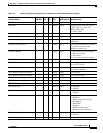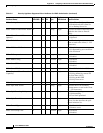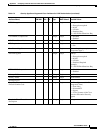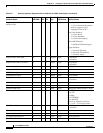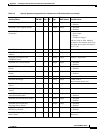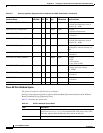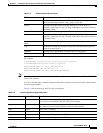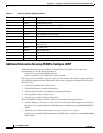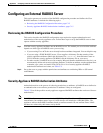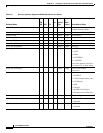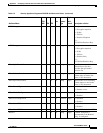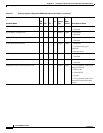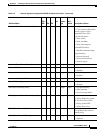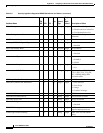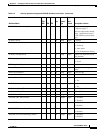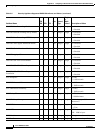
C-15
Cisco ASDM User Guide
OL-16647-01
Appendix C Configuring an External Server for Authorization and Authentication
Configuring an External RADIUS Server
Configuring an External RADIUS Server
This section presents an overview of the RADIUS configuration procedure and defines the Cisco
RADIUS attributes. It includes the following topics:
• Reviewing the RADIUS Configuration Procedure, page C-15
• Security Appliance RADIUS Authorization Attributes, page C-15
Reviewing the RADIUS Configuration Procedure
This section describes the RADIUS configuration steps required to support authentication and
authorization of the security appliance users. Follow these steps to set up the RADIUS server to inter
operate with the security appliance.
Step 1 Load the security appliance attributes into the RADIUS server. The method you use to load the attributes
depends on which type of RADIUS server you are using:
• If you are using Cisco ACS: the server already has these attributes integrated. You can skip this step.
• If you are using a FUNK RADIUS server: Cisco supplies a dictionary file that contains all the
security appliance attributes. Obtain this dictionary file,
cisco3k.dct, from Software Center on
CCO or from the security appliance CD-ROM. Load the dictionary file on your server.
• For other vendors’ RADIUS servers (for example, Microsoft Internet Authentication Service): you
must manually define each security appliance attribute. To define an attribute, use the attribute name
or number, type, value, and vendor code (3076). For a list of security appliance RADIUS
authorization attributes and values, see Table C-5.
Step 2 Set up the users or groups with the permissions and attributes to send during IPSec or SSL tunnel
establishment.
Security Appliance RADIUS Authorization Attributes
Authorization refers to the process of enforcing permissions or attributes. A RADIUS server defined as
an authentication server enforces permissions or attributes if they are configured.
Table C-5 lists all the possible security appliance supported RADIUS attributes that can be used for user
authorization.
Note RADIUS attribute names do not contain the cVPN3000 prefix. Cisco Secure ACS 4.x supports this new
nomenclature, but attribute names in pre-4.0 ACS releases still include the cVPN3000 prefix. The
appliances enforce the RADIUS attributes based on attribute numeric ID, not attribute name. LDAP
attributes are enforced by their name, not by the ID.



